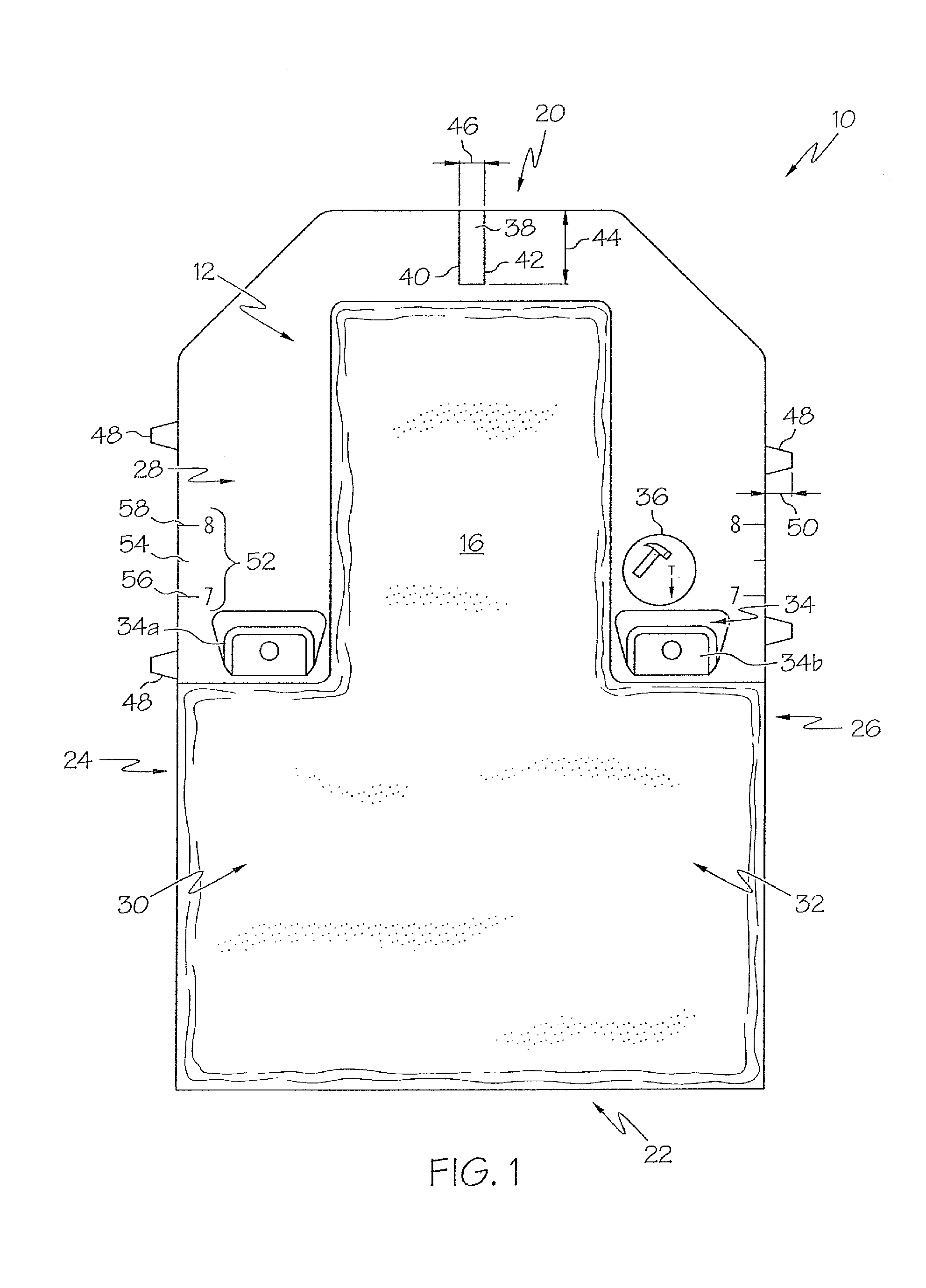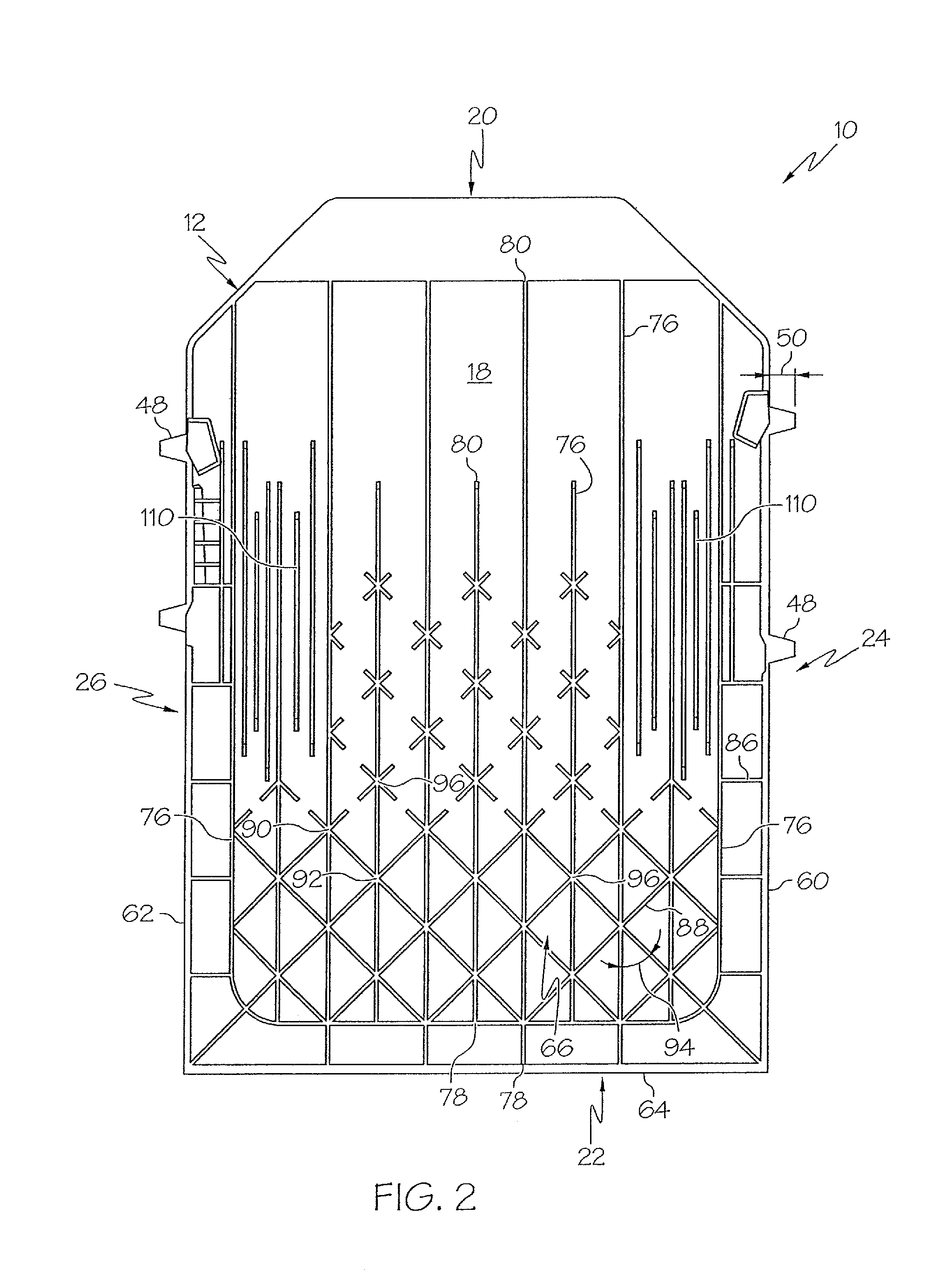Composite shingle
a technology of composite shingles and shingle sheets, which is applied in the field of composite shingles, can solve the problems of uneconomical and less desirable applications in modern building construction, high material and installation costs of slate shingles, and the material cost of slate shingles is much greater than the standard asphalt shingles used, so as to reduce the effective span of the body shell, reduce shear and bending loads, and reduce the amount of material
- Summary
- Abstract
- Description
- Claims
- Application Information
AI Technical Summary
Benefits of technology
Problems solved by technology
Method used
Image
Examples
Embodiment Construction
[0020]The invention will now be described with reference to the drawing figures, in which like reference numerals refer to like parts throughout. For purposes of clarity in illustrating the characteristics of the present invention, proportional relationships of the elements have not necessarily been maintained in the drawings.
[0021]Referring now to FIGS. 1 and 2, reference numeral 10 generally denotes a composite shingle. Composite shingle 10 may be formed of any suitable material such as, but not limited to, rubber (e.g., ground up tire rubber), polymers such as polyethylene (e.g., various grades, recycled or virgin), fillers (e.g., wood fibers, glass, stone, limestone), asphalt embedded mats, tile, or any or suitable material. Further, composite shingle 10 may be made and cut, or molded, to any shape desired using known techniques. For example, one manner of making composite shingle 10 is through use of a combination mixer and extruder; however, any method to make composite buildi...
PUM
| Property | Measurement | Unit |
|---|---|---|
| angle of incidence | aaaaa | aaaaa |
| thickness | aaaaa | aaaaa |
| lengths | aaaaa | aaaaa |
Abstract
Description
Claims
Application Information
 Login to View More
Login to View More - R&D
- Intellectual Property
- Life Sciences
- Materials
- Tech Scout
- Unparalleled Data Quality
- Higher Quality Content
- 60% Fewer Hallucinations
Browse by: Latest US Patents, China's latest patents, Technical Efficacy Thesaurus, Application Domain, Technology Topic, Popular Technical Reports.
© 2025 PatSnap. All rights reserved.Legal|Privacy policy|Modern Slavery Act Transparency Statement|Sitemap|About US| Contact US: help@patsnap.com



